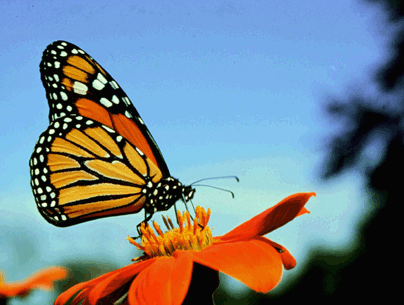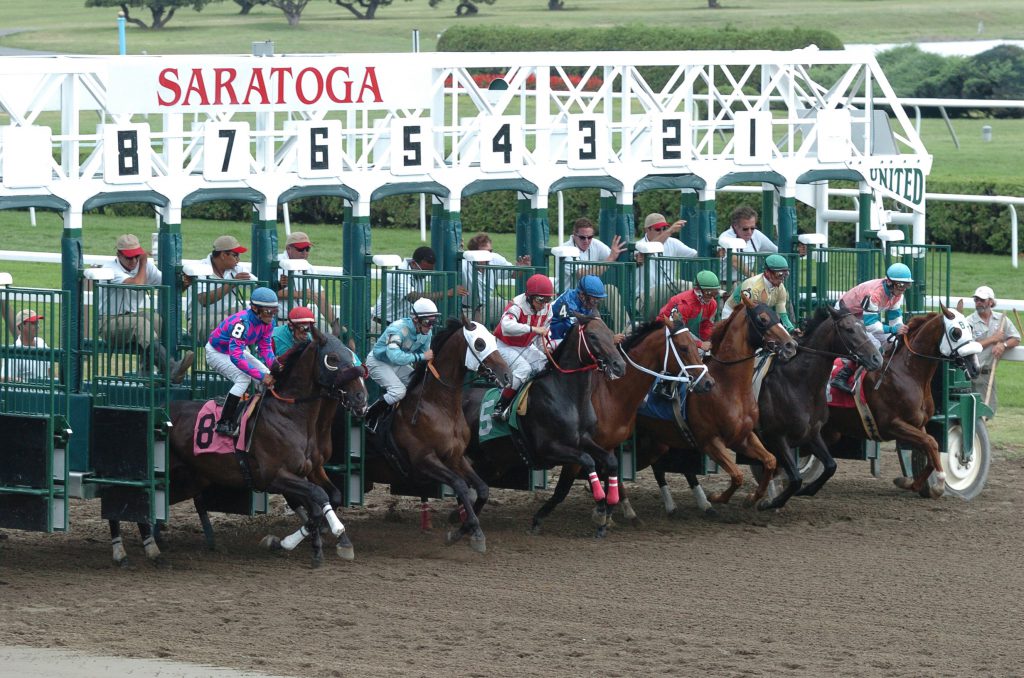
Chaos Theory is that branch of mathematics which studies the behavior of certain dynamical systems that may be highly sensitive to initial conditions. This sensitivity is popularly referred to as The Butterfly Effect.
Phew. Chaos Theory is entirely too complicated for my pea-shooter brain to comprehend. The idea that the flapping of a butterfly’s wings in Vermont will cause a blizzard in Siberia or a typhoon in China may is a fascinating concept to me. I adore the notion that something as seemingly-meaningless in the proverbial “big picture” as a butterfly, weighing less than an ounce–can alter the weather thousands of miles away. But the implications reach even beyond that: since weather can impact even war (it’s hard to attack a neighboring city in a typhoon featuring 200 mph winds)–in theory, said creature’s fluttering wings can even create new situations for the unfolding of human history. Now, that’s deep.
Besides their role as orchestrators of weather and history, butterflies are also very dear to my heart. It goes back to 1991, when a huge Monarch butterfly befriended my Mother and me, and many subsequent sightings and omens were delivered by the little oracles of the skies. Monarch butterflies were tres important to Mom as she made her final journey–so important, in fact, that I cannot see one without saying in my spirit, “Hi, Mommy,” and expecting her to hug me from her celestial boudoir…

Fast-forward to the summer of 2007. Lenny, Karen, Carol and I hung at our picnic table in the
backstretch, and early-on in the meet, Lenny noticed first a fat Monarch butterfly who seemed to enjoy the show. A wise observer of the world around, “our” butterfly, as we came to call him, started his day in the large, old tree that shades our neighborhood in the back of the racetrack. While we all drank coffee, read Indian Charlie and speculated about the day’s potential for winning big–our half-ounce friend flitted from the tree onto the white rail and back, rather like a dog who eagerly checks to make sure that you’re following him to the playground.
[I was intrigued immediately by our tiny interloper, becuase of the aforementioned connection to his species. When Karen first saw him, and every time since that moment, she referred to him thus: There’s your Queen!” (Meaning, my Mother.) Karen’s been my dearest friend for 40 years: she knew my Mother very well. And she knew of the depth of connection between my Mother and Monarchs–so his arrival always elicits a big smile on my darling Friend’s face.]
As the day grew and the sun rose in the sky, our orange-and-black friend dipped occasionally onto the table where we sat. He became a member of our merry band quickly: it amazed us that he seemed neither afraid of us nor cautious about potential harm from we humans who often numbered many, and many, loud, at that.
But this was no random insect: no, our butterfly, our glorious, wide-winged Monarch had an agenda. About four days into the meet, we realized that he was a self-appointed guardian of the horses whose races began at the 5, 5 ½, 6, 6 ½ and 7-furlong lines.
A sense of awe wafted down from his throne on the wind and settled over our shoulders like an insight-ful fog. The childlike wonderment with which we awakened to the realization of Mr. Butterfly’s mission was a rare experience for adults who–whether by association with a racetrack or just by life’s knocks, themselves–had grown a tad weary of life, a bit too-jaded for our own good.
Mr. Monarch was here to protect the horses, but also to enlighten a group of railbirds who needed to experience the innocence of God’s world. Eden was recreated that summer, painted on the canvas of many hearts by the featherweight wings of a creature who knew–obviously–more about Life than all of us put together.
You see…this butterfly had a ritual. You may say that I’m crazy–oh, please, I’m so used to it, I probably wouldn’t even hear you. You may decide that I am insane, and that the guys with the long-armed sweater should pay me a visit. You may shake your head as you decide that I hallucinated this, but I have at least three witnesses to the events I’m about to describe–at least one, Lenny, was there with me regularly, overjoyed at he ceremony before us. Karen always saw him on her trackside visits, and never failed to mention his job as Horse Escort.
And as we often discussed, the ceremony was intentional, directed and acted out in a most fearless way.
And you see…the butterfly waited on the backstretch for the horses in those sprint races to approach the starting gate. He then escorted them in–picture ten 1,100-pound Thoroughbreds, with Jockeys on their backs and Assistant Starters all around–get this image in your head, of all those enormous (by butterfly standards) creatures moving, albeit gracefully, toward and into the 12,000-pound starting gate.
Then put a small, practically weightless butterfly in the air, going from horse to horse, and shooing them into the gate in the gentle manner that only a butterfly can muster.
Once the horses were in the gate, our small, colorful friend then made his way to his seat in the theatre: no more than ten feet from the right side–always the right side–of the starting gate, he alighted onto the ground, sitting stock-still on that famous dirt of the Saratoga Race Course. He waited for the gate to go off, and his horses to blow out of the enormous metal machine without a hitch.
His charges went safely into their respective holes, and blasted out the other side in unison–so he could relax for another half-hour and enjoy the race with the rest of us.
And this was what originally set Lenny and me to thinking about Chaos Theory, but in the reverse. Sort-of.
The starting gate weighs 12,000 pounds. Six tons. It takes a tractor with an enormous engine to move it into position for every race. The electro-magnets that hold the doors together–then open them with a shudder–add force, energy and pounds-per-square-inch factor to every gate opening.
The gate may hold 10 Thoroughbreds at a time. If the average-low end of those horses is a “mere” 1,000 pounds–then another 10,000 pounds have been added to the total weight.
At least 22,000 pounds of muscle and cast-iron; physics of electromagnetism; flesh and bones, sitting on the deep surface of the racetrack. It’s a wonder the whole thing doesn’t sink from the weight, alone.
Then that gate acts like a rifle, as the equine bullets are jolted into soul-shattering speed onto the track, around the bend and hurtled, headlong, into history books.
That’s an immeasurable amount of energy–in scientific terms–to contain, then release, all at once. Were I a mathematician, I could do the numbers for you.
I cannot express it in Arabic numbers and Pi, I can relate it to you only in terms of the human psyche, which cannot be measured.
When that gate opens and we humans stand at the rail, the rolling thunder of the ten or so horses feels like an assault from our own guts. Henry V and his men felt no greater a shiver at the Battle of Agincourt, than we feel when those hooves thunder onto the dirt and into the core of our very beings.
We huge humans–each of us probably 1,000,000 times more weighty than our Backstretch Butterfly–must hold on to our hearts to prevent them from bursting from our chests. Part of this is emotional, I cannot deny it. And the other part is that something ancient and Archetypal is touched, some trigger from Plato’s Land of the Forms is tripped within our souls, as we experience and re-experience something as old as Time, and yet as untouchable and unfathomable as that same concept. Who can measure Time? And yet–who can live without trying to harness it?
The other part is purely physical. Sensually, the skin on our arms is caressed by the rough lovers whose pounding on the ground beneath excites us in a way that nearly embarrasses. The fact that so many of we backside railbirds feel that same lover’s rough touch together and are not ashamed to share the experience contributes to the terrible joy we feel every single time that gate catapults our equine heroes toward their respective destinies.
We humans experience something so body- and soul-shaking that, like good addicts, we return race after race, day after day. We must feed that rush, we need the power to empower our own lives.
And our Monarch butterfly–so small that his weight cannot be measured by the smallest of instruments–sits, stalwart and still, on a place much closer than we humans on the other side of the rail. Butterfly sits ten feet from the source of all that physical energy and power–and flinches not one iota. If, according to Chaos Theory, the fluttering of his wings can start a storm in Asia–how much more can the tornado ten feet away drill the tiny animal to his very core?
It seems that the volcanic explosion ten feet away touches him not, probably because he, as a more intimate member of Nature, is far closer to the organics of math and roots of mythology than we.
For two years we observed his ritual, his serenity, his Zen. He’s not around yet this year, but he may be soon. But if he never returns, we had two years of wonderment at the cosmic meaning of it all. I am so glad to know that Lenny experienced this, also, for it confirms that I’m not commitable. Two people sharing a hallucination isn’t a hallucination, at all, but perhaps it is a shared miracle. Three people who witness the same remarkable, almost unbelievable moment, this Gatekeeper’s Dance, utterly destroys the concept of “mere coincidence.” It is a pattern.
For our butterfly, perfectly still as the ground beneath him shakes like Krakatoa’s Third Day–seems to prove that the opposite of Chaos Theory may be true, also. His wings can cause the skies to rupture over Tanzania, but an earthquake beneath his tiny feet don’t affect him at all. He may be the superior being in this Big Picture, for, while he can control the weather, itself, by the crooking of his figurative finger–the atmosphere in his workspace doesn’t touch his life, his view or his determination to enjoy his vocation.
And perhaps that’s why this bound-by-ritual Zen Master of the Cocoon Set came to us two years ago. To teach that you can be right next to the chaos, and participate in it without fear. To instruct, that one must do one’s job fearlessly, sit down for a few minutes; feel the power–then get in line to do the job all over again.
Whatever his reason for returning to the track every day, without fail–and for escorting every sprinter into the gate–one of the results is that he taught at least two very frail humans valuable lessons about sitting still and letting it happen around you. You don’t get run over if you’re next to the gate–but you can vicariously take the ride, feel the passion–and drink the sweet nectar of victory at the end of the race.
That which seems to be the smallest is the largest in spirit. Being small isn’t necessarily bad–regardless of your size, you can use your wings to help others, your feet to plant firmly into the loam, and your ability to soar to dance joyously on a molecule of air. All while performing the job God intended you to do, and doing it with grit and peace of heart.
———————————————————————————————————————————
[Photo courtesy of NYRA (New York Racing Association) and special thanks to Adam Coglianese.]


Very nice article-
Pat
Great Article!